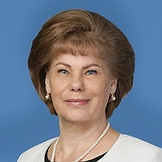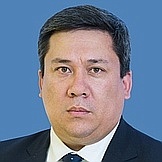Regional flags and emblems


PROFILE
Established 1 June 1922 as the Oyrot Autonomous Region
The Gorno-Altaisk Autonomous Region since 1948
The Gorno-Altaisk SSR as part of the RSFSR since 1991
The Republic of Altai since 12 December 1993
Capital Gorno-Altaisk
The Republic of Altai is part of the Siberian Federal District
Area 92,900 sq km
Population 210 700 (2024)
Ethnic groups
(2020 National Census, %)
Russian – 53,7
Altai – 37,01
Kazakh – 6,39
Other – 2,9
Administrative divisions (2024)
Municipal districts – 10
City districts – 1
Rural towns – 91
Geography and climate
The Republic of Altai is in the highlands of the Altai Mountains in the south of Western Siberia. At its widest points, the republic is 360 km from north to south and 380 km from east to west.
The republic borders on the republics of Tyva and Khakassia, the Altai Territory and the Kemerovo Region. It also has a state border with Kazakhstan, China and Mongolia in the south and southwest.
The terrain is mostly alpine. The highest mountain, Belukha (4,506 m), is the highest point of Siberia.
The Katun and Biya are the main rivers. There are about 7,000 lakes that cover over 600 sq km in total, with Lake Teletskoye being the largest with an area of 230.8 sq km.
The region has a moderate continental climate with cold winters and warm summers. January temperatures average –22.2°C. July temperatures average 14.7°C.
On the territory of the Republic of Altai there are two state nature reserves ”Altai“ and ”Katunsky“, two state natural sanctuaries of regional significance, the National Park ”Sailugemsky“, four nature parks and numerous natural monuments.
Government
The legislative branch is represented by the State Assembly – called the El Kurultai (Parliament) – of the Republic of Altai, which is the permanent representative and only body of legislative authority of state power in the region.
The El Kurultai has 41 deputies elected for five years, with 30 of them running in single-member constituencies and the other 11 in the single electoral district, where winners are identified in proportion to the number of votes cast for lists of candidates nominated by electoral associations.
The current El Kurultai was elected on 14 September 2019. The term expires in September 2024.
The executive branch in the Republic of Altai is represented by the Head of the Republic of Altai, Prime Minister of the Republic of Altai, the Government of the Republic of Altai and other bodies of executive authority. The Government of the Republic of Altai is the supreme and permanent body of executive authority in the republic, accountable to the people in the republic for dealing with social, economic and other issues.
The Head of the Republic of Altai, Prime Minister of the Republic of Altai is the republic’s highest-ranking official who runs the executive branch.
The Head of the Republic of Altai, Prime Minister is elected for five years by the citizens of the Russian Federation permanently residing in the republic. The term of office of the current incumbent expires in September 2024.
Economy and natural resources
Agriculture is among the priority sectors for the republic’s economic development. It accounts for over 18% of the gross regional product, with more than 70% of the population living in rural areas.
The most developed industrial sectors include mining (gold, silver, tungsten, molybdenum, etc.), the non-ferrous metal industry (mercury), timber and wood processing, consumer goods production and the food industry.
Budget-funded sectors (healthcare, education, public administration, etc.) are the largest contributors to the gross regional product.
Sustainable development in the Republic of Altai hinges upon the availability and sustainable use of natural resources, both for recreational purposes and the extraction of raw materials.
The region has a great variety of mineral resources, with gold as its most important mineral. It also boasts unique reserves of rare metals – tungsten, molybdenum, bismuth, cobalt, lithium, tantalum and mercury. Promising silver deposits have been discovered recently. Having completed exploration activities, the region is ready to launch extraction operations at marble, granite stone, iron, bituminous and brown coal deposits.
The Republic of Altai is also rich in timber, offering opportunities for setting up various timber stockpiling and processing operations.
A wide variety of medicinal plants grow in the region with hundreds of thousands of tonnes of gross reserves.
The Republic of Altai is considered one of the best places in West Siberia for hunting.
Culture and tourism
The Republic of Altai’s culture unites rich experience, traditions and spiritual values of previous generations.
The Republic of Altai has much to offer in terms of its historical and cultural heritage too. It has world-famous archaeological monuments, including the Scythian royal burial mounts, cave paintings, ancient settlements and fortresses, irrigation systems and much more. Its mountain regions have the highest concentration of runestone in the country. The republic has over 2,000 registered archaeological sites, with 120 enjoying federal status.
The republic’s museums present many exhibits on culture, history and archaeology, including the Anokhin National Museum of the Republic of Altai in Gorno-Altaisk. The Ethnographic Museum in the village of Verkhny Uimon is also very popular.
The republic’s peoples hold special entertaining events, such as the El Oiyn interregional holiday of the Altai people, the Altai Springs festival of Russian folk art, small indigenous peoples’ Tyuryuk Bairam – the Cedar Holiday, the International Storyteller Kurultai, the Chaga-Bairam folk festival and others.
Unique historical and archaeological landmarks and rich recreation resources provide for the development of almost all kinds of tourism in the region.
About 2 million tourists visit the republic annually and every year the tourist flow increases.
The Republic of Altai is one of the planet’s cleanest areas almost untouched by humans. It has everything necessary for treatment and recreation: highly-ionised air, many sunny days and medicinal flora and fauna.
Tourism is becoming a leading economic sector. The Manzherok Alpine Complex at the foot of the Malaya Sinyukha Mountain is the largest tourism project. The ski trails of various difficulty cover up to 60 km. The complex is open all year round. Visitors can ascend the Malaya Sinyukha Mountain in the summer, go to Lake Manzherok or take various tours.
Lake Teletskoye is very popular among tourists. There are about 20 boarding houses, tourist bases and camp grounds along its shores. This is where the best fishing spots are. Pedestrian, horse, boat and bus tours are also available. The Karakol lake group is another unique natural landmark. The water in each of the seven lakes is different in colour and composition.

